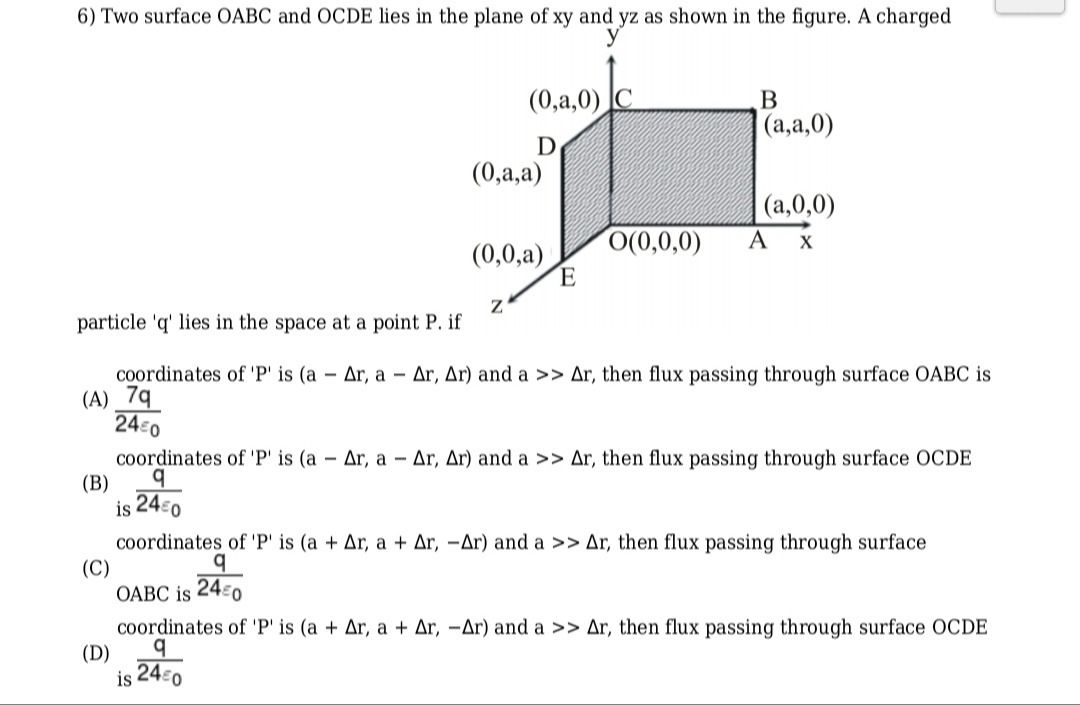Question
Question: Two surface OABC and OCDE lies in the plane of xy and yz as shown in the figure. A charged particle ...
Two surface OABC and OCDE lies in the plane of xy and yz as shown in the figure. A charged particle 'q' lies in the space at a point P. if

coordinates of 'P' is (a − Δr, a − Δr, Δr) and a >> Δr, then flux passing through surface OABC is 24ϵ07q
coordinates of 'P' is (a − Δr, a − Δr, Δr) and a >> Δr, then flux passing through surface OCDE is 24ϵ0q
coordinates of 'P' is (a + Δr, a + Δr, −Δr) and a >> Δr, then flux passing through surface OABC is 24ϵ0q
coordinates of 'P' is (a + Δr, a + Δr, −Δr) and a >> Δr, then flux passing through surface OCDE is 24ϵ0q
A, B, C
Solution
The problem involves calculating the electric flux through two surfaces, OABC and OCDE, due to a point charge 'q' at point P. We use symmetry arguments for a point charge placed near a corner of a cube.
Key Concepts:
- Gauss's Law: The total electric flux through a closed surface is proportional to the charge enclosed.
- Symmetry: Exploiting symmetry simplifies flux calculations.
- Charge near a Corner: A charge near a corner of a cube has specific flux distributions through the faces.
Case A and B: P(a - Δr, a - Δr, Δr) and a >> Δr (Charge inside the cube near a corner)
This places the charge 'q' infinitesimally inside the cube near corner B(a,a,0). In this scenario:
- Flux through OABC: 24ϵ07q
- Flux through OCDE: 24ϵ0q
Case C and D: P(a + Δr, a + Δr, -Δr) and a >> Δr (Charge outside the cube near a corner)
This places the charge 'q' infinitesimally outside the cube near corner B(a,a,0). In this scenario:
- Flux through OABC: 24ϵ0q
- Flux through OCDE: 24ϵ0−q
Therefore, options A, B, and C are correct.
